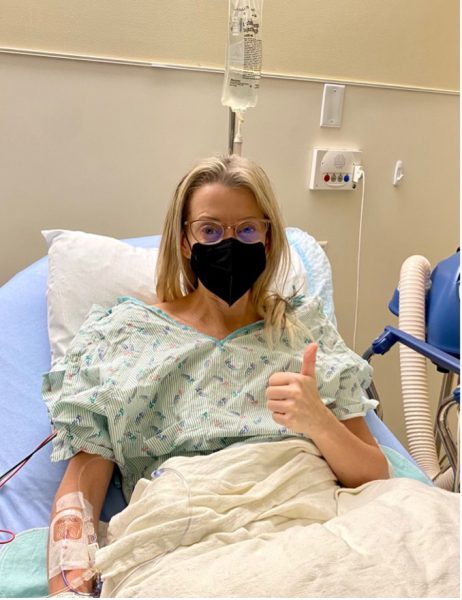In the US, a person is diagnosed with breast cancer every 12 minutes. October is Breast Cancer Awareness Month, which helps educate everyone about the diagnosis, treatment, and impact of breast cancer, and to ensure that everyone has access to the screenings and support they need.
Deb Nielsen, Chief People Officer at Truveta, shared her story of her diagnosis in 2021.
The call that changed everything…
“We saw something and need to schedule you for a follow up,” are never the words a woman wants to hear after a routine mammogram. Yet in September 2021, these were the words that changed my life.
The impacts of COVID are everywhere, including, for many people like me, postponing routine medical appointments. It had been three years since my last mammogram when I scheduled what I assumed would be a routine visit. The day after my procedure, I received the dreaded call. My doctor saw something on the scan that warranted further review. After repeated scans, biopsies, and other procedures, I received my diagnosis just before Christmas: ductal carcinoma in situ (DCIS) in my right breast. As a previous cancer survivor (I had Hodgkin’s Lymphoma when I was 21), I knew what “carcinoma” meant. My stomach dropped. Why am I the unluckiest person who gets cancer twice in their life? I bristled at the thought of being merely another statistic and having membership in the breast cancer club. Where do I go from here?
For me, the path of the unknown, riddled with more questions than answers, was far more overwhelming than the path of treatment. The prevalence of abnormal cells in my right breast guaranteed a single mastectomy. I had so many questions. Should I consider having a double mastectomy? What do the experts recommend? What did other women like me choose? Where would I find the right answers?
I turned to my community. My collection of family, friends, colleagues, and medical team gave me a foundation of support and a wealth of knowledge. I ultimately chose to undergo a double mastectomy with reconstruction a few weeks later. Even though statistically low, I didn’t want to take the chance of a future breast cancer diagnosis in my other breast. No way did I want cancer thinking, “She got us twice…but third time’s a charm.” As a healthy, 50- year-old woman, I knew every subsequent mammogram visit would induce surveillance anxiety and the fear of cancer recurrence.

Deb Nielsen in the hospital in 2021.
This week at Truveta, we kicked off our next planning milestone and celebrated the announcement of a new customer, Boston Scientific. These milestones are the culmination of the incredible work and dedication of our team — a team I’ve helped build over the past two years and that makes me proud, every single day.
Truveta includes data from over 65 million de-identified patients across the United States. I am one of those patients. I remember the day my radiology records were transferred to my surgical oncologist, who works at one of Truveta’s member health systems. At that moment, our company’s value to earn trust became personal and real. I am forever reminded that every data point in our system represents a human. From the collection of these data points, life science and healthcare researchers receive real-time insights to accelerate their research.
This week, I’m 8 months cancer-free. I look forward to the day when I read about the first breast cancer research study built from Truveta data. I envision a world where the path of the unknown is paved with more answers than questions. I am reminded daily that the world needs Truveta, and I am beyond lucky to be a part of it.
For more information on breast cancer, how to know your risk status, or find a screening, visit Susan G. Komen or the American Cancer Society.
Truveta is a collective of US health systems with a shared vision of saving lives with data. Truveta offers innovative solutions to enable researchers to find cures faster, empower every clinician to be an expert, and help families make the most informed decisions about their care. To learn more, follow us on LinkedIn and Twitter, and sign up for our newsletter.
